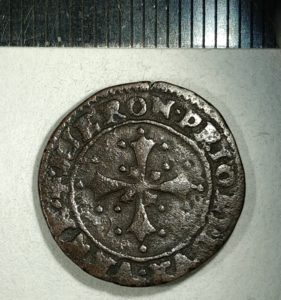The material study of ancient coins is very often rendered particularly challenging by several factors: the presence of surface alteration products; the occasional or deliberate, e.g., forgery, changes in the composition of the base alloy; the misleading information deriving from historical and literature sources.
We present herewith a multi-analytical approach to the study of ancient coins.
The selected test samples are coins widely used in the Venetian Republic over a time span ranging from the second half of the 16th until the early years of the 17th century: the so-called “sesino”. The rationale of the study was to establish a model, taking into account the layered structure of the surface region of the coins, that once validated could be used for a fully non-destructive characterization of similar items.
The specific interest of the results obtained from this investigation is twofold. First, the actual composition of the copper based alloy used for these specific type of Venetian coin, has been measured for the first time with direct measurements on the coin cross-section. Second, the detailed characterization of the coins provides an essential background knowledge for a fully non-destructive characterization of the same kind of coins.
Authors: D.Martorelli, M.Bortolotti, M.Capris, L.Lutterotti, L.Maines, G.Pepponi, S.Gialanella
Link to the complete text: https://doi.org/10.1016/j.nimb.2019.06.010


 https://orcid.org/0000-0002-6036-1997
https://orcid.org/0000-0002-6036-1997








